What is Panchang?
The logic: There is a saying that if you want to ask your boss a favour, it is better to do it after he had his lunch! Makes sense because, after feasting and resting, he will be in a more benevolent mood. If he is in a bad mood instead of asking a favour now, it is better to wait till he is in a good mood.
The ancient Indian Seers used their Divine Wisdom to check the moods of the Heavenly Bodies to elect the right time to do the important things and also to avoid the bad times. The elements of Panchangam, also called Panchanga and Panchang, deal with these right and wrong times. Panchang calculations are highly accurate than the convential horrorscopes. Panchang tells you the best days meant for travel and other activities of life. Based on the vara, tithi, nakshatra, yoga and karana the Panchang can tell you whether the days is auspicious or not and whether it is suitable for the purpose or not. It's for this reason, Panchang has become an integral part within the lives of Kashmiri Pandits.
In Sanskrit Panchangam = Pancha(five) + Angam(limbs). Tithi or lunar phase, Vara or weekday, Nakshatra or the star constellation in which Moon is placed, Yoga or the auspicious/inauspicious period prevalent and Karana which is a half phase of Tithi are the Pancha Angam – the five main elements to check the good or bad periods in a day to perform many types of important tasks.

The calculations base: Originally people used to follow the Surya Siddhanta calculations. But now the readings of the modern telescopes and satellites are lot more precise and we use this but the basic principles of Surya Siddhanta are there. This is called Drik Panchanga. Whether it is Telugu Panchangam or Tamil Panchangam or Gujarati Panchanga or North Indian Panchang, the fundamental principles of calculations are the same. In some traditions the Ephemeris used or the Ayanamsa used are different and there may be a variation in the Tithi, Nakshatra timings. We use the most accurate NASA ephemeris and the Ayanamsa used is the most accurate Chitrapaksha Ayanamsa (also called Lahiri Ayanamsa). Our software automatically adjusts the daylight saving time whenever it is applicable. We have a very large database of places and adding more.
The Panchanga displayed is according to the popular Amananta or Chaitradi system popular in South India. In this the Hindu month starts after Amavasya. The other system is Poornimanta or Kartikadi where the Month starts after Poornima or full moon so for them the Indian month starts a lunar fortnight earlier. This is more popular in North India. All other things remain same. Soon our Panchanga will have the option to change between these two systems plus monthly Panchanga tables etc..
Date, time and place: By default the data is for the current date for New Delhi at Sunrise time. The time displayed is in 24 hour format. Sometimes it may show more than 24, ie, 27.30 etc. This means the Tithi or Nakshatra etc is there till next day morning 3.30. Many of the features of Panchangam – like Lagnas, Horas, Rahukalam, Varjama and other good and bad times etc. – differ vastly based on the place where you are OR where the task or act will be performed. You can check Panchanga for any date and place. If your place is not there, choose the nearest place.
Year: The Hindu Panchanga system follows a 60 years cycle and repeats after every 60 years. The sixty years are divided into 3 groups of 20 each. The first 20 from Prabhava to Vyaya are ruled by Brahma. The next 20 from Sarvajit to Parabhava by Vishnu and the last 20 by Shiva.
Ayana: The Hindu year is divided in to two Ayanas of six months each called Uttarayana and Dakshinayana. The Uttarayana is the northern journey of the Sun’s course from the zodiac sign Makara (Capricorn) starting from 14th January ( Makara Samkranti day) till appx 15th July when it enters the zodiac sign Karka (Cancer) and is considered an auspicious period. The Dakshinayana is the Sun’s southern course from Karka to Makara and is considered inauspicious.
Vikrama Era: It was started by the emperor Vikramaditya of Ujjain following his victory over the Sakas in 56 BC. It is a lunar calendar which starts with the first day after the new moon, in the month of Chaitra, Chaitra Shuddha Prathami Ugadi festival day and falls in March.
Saka Era: The Saka Era, also called Salivahana Era, is used by the Indian national calendar and a few other Hindu calendars. According to historians the Saka era was founded by the king called Shalivahana to celebrate his victory against the Sakas in the year 78 CE.
Masa or Month: There are two types of Indian calendars. One is the solar calendar (Surya ganana) based on the entry of the sun in to various zodiac signs and the other is the lunar calendar (Chandra ganana) based on the transit of the moon. Our Panchanga displays the lunar calendar which is the is the most widely followed Panchanga calendar in India. There are two types of lunar calendars. One starts with the Kartika month and counted after Poornima or the full moon till next Poornima. Hence it is called the Poornimanta or Kartikadi system. This is popular in North India. The other starts with the month Chaitra and counted after Amavasya or the new moon till the next Amavasya. Hence it is called Amavasyanta or Amananta calendar. This is popular in South India. The names of the months are the same.
The lunar months are counted by Tithis or the phases of the moon. Every 12 degree difference between the sun and the moon forms a Tithi. The lunar Tithi or day is the Tithi prevailing at the time of sunrise is the day’s Tithi. New moon to full moon to new moon completes a lunar month. As the motion of the moon is not uniform, a Tithi may be longer than a day or shorter than a day. A lunar fortnight, or Paksha, can vary from 13 to 15 days because of this. As the moon takes about 29.53 days to complete one round of the earth, the 12 lunar months amount to 354 days approximately. As it is less by 11 days as compared to the solar year, once in 2-3 year an Adhika Masa or extra month is added to the lunar calendar to make it coincide with the solar calendar. The twelve lunar months take 354 days, 8 hours and 34.28 seconds. This creates a difference of 10 days, 21 hours and 35.16 seconds from the actual solar year of 365 days, 6 hours, 9.54 seconds.
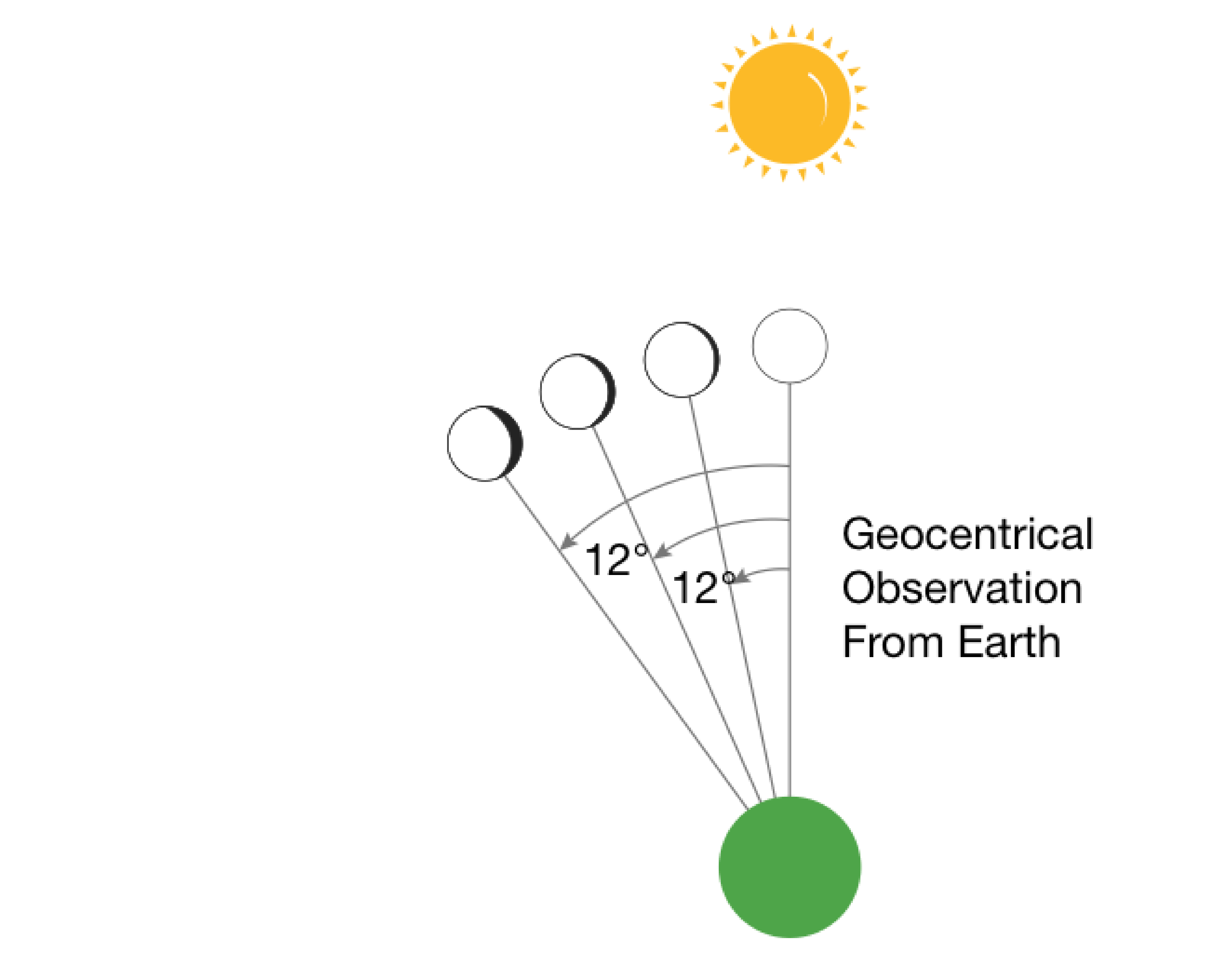
When the accumulated difference between the two systems exceeds 29 days, 12 hours, 44 minutes and 2.865 seconds, an adjustment is made with a extra month (Adhika Masa), which carries the name of the previous or the next month, depending on the proximity of the month. This addition of extra month is done when there is no solar ingress in a lunar month, ie, the sun does not at all transit into any new rashi but simply keeps moving within one zodiac sign in a lunar month, then that lunar month will be named according to the first upcoming transit. It will also take the epithet of adhika or “extra”. For example, if a lunar month elapsed without a solar transit and the next transit is into Mesha, then this month without transit is labeled adhika Chaitra. The next month will be labeled according to its transit as usual and will get the epithet nija (“original”) or shuddha (“clean”).
Paksha: There are 30 lunar phases in an Indian Panchanga month – 15 phases of the Amavasya or dark half called Krishna Paksha and 15 phases of the Poornima or dark half called Shukla Paksha. So the Tithis are referred as Krishna Ekadasi or Shukla Ekadasi etc. Some also call the Krishna Tithi as Bahula and the Shukla Tithi as Suddha.

Days since Kaliyuga: According to the calculations given in the Vedic scriptures the present Kali Yuga started on Bhadrapada, Krishnapaksha -Trayodasi day, in Vyatipaat yoga at midnight, in the Aashlesha Nakshatra (17th/18th Feb 3102 BC) and the age of the Kali Yuga as on 2013 is 5115 years.
Julian day: The Julian Day is the count of the day starting from noon time Greenwich Mean Time January 1, 4713 BC as per the Julian calendar or November 24, 4714 BC in the Gregorian calendar. This is used by astronomers.
Sunrise, Sunset, Moonrise & Moonset: In the Hindu Panchanga the day duration is from Sunrise to next day Sunrise. The day duration and the night duration are also used for many astrological calculations. Many traditional people who take religious vows to fast also use this information, like “fast till sunset” or “fast till moon is sited” etc. In Vedic astrology a day is counted from Sunrise to next day Sunrise.
The modern astronomical calculation of sunrise and sunset & moon rise and moon set are as per the time when the edge of the disc appears over the horizon. This is what the newspapers and astronomical and geographic websites show.
The Hindu Vedic sunrise and sunset & moon rise and moon set are as per the time when the center of the disc, i.e. half the disc, rises over the horizon. Hence The Hindu Vedic sunrise and sunset & moon rise and moon set times shown in our Panchanga are more by up to 5 minutes.
Sun & Moon positions: Displays the zodiac signs in which Sun and Moon are placed on that day.
Ayanamsa: Ayanamsa is the tilt of the vernal equinox or in simple terms the tilt of earth’s north pole. Every year it is increasing by 50.29 seconds. The Ayanamsa is deducted from the actual longitude of the planets in the zodiac (called Sayana position) to get the Niryana longitude which is used in Indian astrology. This gives the actual angle at which the planets are vis-a-vis our location on earth.
Sidereal time at noon: This is used by astrologers to calculate Lagna, tenth house etc.
Rahukalam, Gulika Kalam, Yamagandam, Durmuhurtam Varjyam:Are the bad times during a day and it is ideal to avoid these periods to start any auspicious and important work
Amritakalam:This is an auspicious time for any undertaking. Not to be confused with Amrta Yoga, Amrita Siddhi Yoga etc. which are also auspicious but different.
Tithi, Vara, Nakshatra, Yoga and Karana – the 5 main elements of time in Panchanga
Tithi: The phases of the moon are called Tithis. Tithi is every 12 degrees difference between Sun & Moon. The formula to calculate is (Moon – Sun Long)/12 = Tithis over.
The starting and ending times of tithi for the day is displayed in 24 hours format and the name of the next Tithi is also mentioned. If the time shown is more than 24 hours, it means next day.
Except Amavasya and Poornima the rest of the 14 Tithis carry the same name. Hence to differentiate people refer to them as Krishna Paksha Dwteeya or Bahula Dwteeya and Shukla Paksha Dwteeya or Suddha Dwteeya etc.
Traditionally the Tithi prevalent at Sunrise is taken as the Tithi of the day. Various Hindu festivals are based on Month and Tithi. However for some night based festivals like Deepavali etc. the Tithi present at the night is taken. Whenever a day has an auspicious Hindu festival our Panchanga will mention it.
The tithi which is present at the time of Sunrise on first day and also on the second day sunrise is called Vridhi Tithi and considered very auspicious. The Tithi which starts after first sunrise and ends before second sun rise is called Kshaya Tithi and is considered inauspicious.
The Tithis have several attributes and positive or negative qualities and suitable for various types of undertakings. For example auspicious Tithis like Ekadasi is good for worship and fast etc but if you want to fight someone or start war, the Amavasya which is an inauspicious Tithi is the suitable one!
The phases of the moon are not just the light and shadow effects of sun and moon as taught in our modern schools. They go much deeper than that and from a spiritual perspective each and every breath we take has something to with these phases.
According to the scriptures, the Moon has 16 kalas, or phases. These 16 kalas are ruled by the 16 Nitya Devis. They are called Shodasa Nityas. Out of these 15 are visible to us and the 16th, which is Devi, is beyond our visibility. On Poornima or full moon day all the 15 Nityas are in the moon and the moon is strong, auspicious and shines brightly. On the 1st Thithi after the Poornima, i.e., Pratipada, one Nitya leaves the moon and goes to the sun and the moon is reduced slightly in size. On the next Dwiteeya Tithi another Nitya leaves the moon and goes to the sun and the moon is further reduced in size. This way they leave one by one till the moon becomes totally dark on the 15th day, which is called Amavasya or the new moon day when moon is at its weakest and is inauspicious.
Each Nitya Devi has her own yantra, mantra, Tantra and prayogas or ritual applications. In the olden days people used to worship the ruling Nitya Devi of the Tithis. Today even most of the astrologers do not know this! Our Panchanga mentiones this rare info – the Ruling Nitya’s name and Her Mantra.
Vara: Vara is a week day. Sunday to Saturday are named Adivaram, Somavaram, Mangala varam, Budha varam, Shukra varam and Shani vararam respectively and are ruled by Sun, Moon, Mars, Mercury, Jupiter, Venus and Saturn. Of these seven Sunday, Tuesday and Saturday are considered bad for any auspicious work. These days have certain attributes and are suitable or not suitable for certain types of work. This information is displayed on the Vara column.
Nakshatra: Vedic astrology divides the 360 degrees of the zodiac space in to 27 Nakshatras or star constellations. Each Nakshatra has a span of 13 degrees and 20 minutes. Each Nakshatra span is further subdivided in to 4 Padas or quarters of 3 degrees and 20 minutes. On the day in question the Nakshatra in which Moon is placed is the prevailing Nakshatra. While the span of the Nakshtras is constant the speed of Moon is not constant. Hence a Nakshatra may be in operation for more than a day or less than a day. Panchanga gives the starting and ending time of the nakshtra in operation and the name of the next Nakshatra wherever applicable.
The 27 Nakshatras are divided in to 3 groups of 9 each and these are classified as Deva, Manushya and Rakshasa groups. They are also classified as fixed, movable, gentle, cruel etc. etc. The Nakshatras also have various ruling deities and good and bad attributes etc. and hence are considered suitable or unsuitable for various kinds of auspicious or inauspicious work. This information is displayed in the Nakshatra column.

Yoga: Yoga is a time period prevalent in a day and is calculated by adding the longitudes of Sun and moon and dividing it into 27 equal parts. The yogas which are inauspicious for any good work are mentioned in the Yoga section. The other Yogas are auspicious.
Karana: A Karana has half the span of the Tithi so there are 2 Karanas during a Tithi. There are total 11 Karanas. The Karana sequence changes according to Krishnapaksha or Shuklapaksh and the 1st half or 2nd half of the tithi. The Karanas too have good and bad attributes and are suitable for various good or bad undertakings. This information is given in the Karana column.
Special Yogas: On certain days when the Tithi, Nakshatra & Karana are all auspicious, that length of time is called Shubha Yoga or auspicious time – like Sarvartha Siddhi Yoga or Amrita Siddhi Yoga etc. Similarly several bad combinations are called Asubha Yoga or inauspicious time like Mrityu Yoga, Randhra Yoga etc. The Panchangas mention these.
The Kalas:
Rahukalam, Yamagandam & Gulikakalam: These periods are not suitable for any auspicious undertaking. They differ from place to place depending on Sun-rise & Sun-set time.
Varjyam, Durmuhurtam & Amrita Kalam: When a Nakshatra is in operation certain portions of time periods are considered auspicious or inauspicious. This varies from Nakshatra to Nakshatra and also on the duration of the Nakshatra. The calculation rules are complicated. Varjyam & Durmuhurtam are inauspicious periods and not suitable for any auspicious undertaking. Amrita Kalam is an auspicious period.
Most of the muhurta scriptures agree on the timings of the above 3 but some scriptures give slightly different timings especially for Arudra, Hasta and Moola Nakshatras. We follow Kalaprakshika, a highly acclaimed Gochara scripture. Some other softwares may differ for these if they follow Kalavidhanpaddhati or Kumaraswamiyam etc..
Tarabalam: To calculate tarabalam one must calculate position of daily nakshatra from ones Janma nakshatra (both nakshatra inclusive). Divide that by 9. If the reminder is 2,4,6,8,9 or 0 then it’s good otherwise it’s bad, ie, 3,5,7 to be avoided. The specific auspicious or inauspicious details are displayed in Panchangam.
Chandrabalam: Chandrabalam means the strength of the moon. On the day in question if the zodiac sign in which Moon is placed happens to be 6th, 8th or 12th counted from your Janmarasi, the Chandrabalam is bad. 8th is the worst. All other 9 signs the Chandrabalam is strong.
Hora: The Hora is approximately one hour duration in a day, ruled by a particular planet. The time can vary depending on Sunrise time and day/night duration. In a day starting from the sunrise there are 24 horas ruled by the seven planets. Depending on the ruling planet the horas are either suitable or inimical for various undertakings. This can be used to select a suitable time for an undertaking depending on which planet Hora it is. The information is displayed on the panchanga page Hora link.
Muhurtas: There are 30 Muhurtas in a day. It is approximately 48 minutes but can vary slightly depending on the day/night duration. Out of the 30 Muhurtas, Rudra, Ahi, Pitru, Puruhuta, Naktanchara, Bhaga, Girisa, Ajipada, Yama & Agni are inauspicious Muhurtas.
Lagnas: The lagna is the zodiac sign rising on the eastern horizon at any given time and place. In a day there are 12 lagnas of approximately 2 hours duration but they vary a bit depending on date, time, month and place. Lagna plays an important role in selecting the Muhurta. The lagna timings in a day are displayed in Panchang.
Chougadia Pravesh: Chaugadia table used to check the auspicious time to start any good work – especially for travel. Amrit, Shubh, Labh and Chal are the 4 good muhurtas and Rog, kaal and Udyog are the 3 bad ones. The actual day duration or night duration are taken from sunrise and sun set timings of the place and divided by 8 an each portion is a Chaugadia.
Ephemeris: The ephemeris show the Niryana position of the planets for the day. It shows in which zodiac sign the planet is placed, its degrees, minutes and seconds and whether retrograde or direct.
If you liked this post then comment, like and share wit your friends and relatives
.jpg)









01-250x250.jpg)
01-250x250.jpg)
















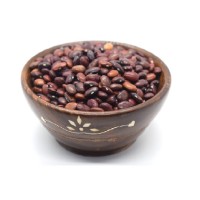


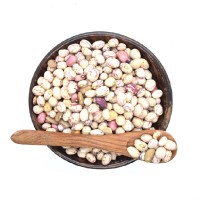


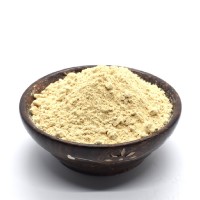
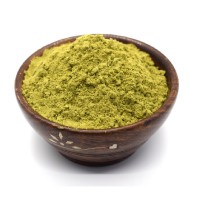











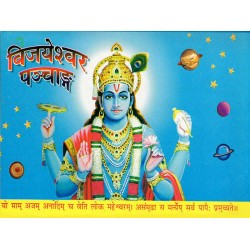
4 Comment(s)
Thankful for the information
the timeless wisdom of the Panchang! Understand its influence on the spiritual and cultural aspects of Kashmiri Pandits' lives, enhancing customs and daily rituals. #Panchang #KashmiriPandits #Tradition
This is called Drik Panchanga. Whether it is Telugu Panchangam or Tamil Panchangam or Gujarati Panchanga or North Indian Panchang, the fundamental principles
The Hindu year is divided in to two Ayanas of six months each called Uttarayana and Dakshinayana. The Uttarayana is the northern journey of the Sun’s course from the zodiac sign Makara
Leave a Comment